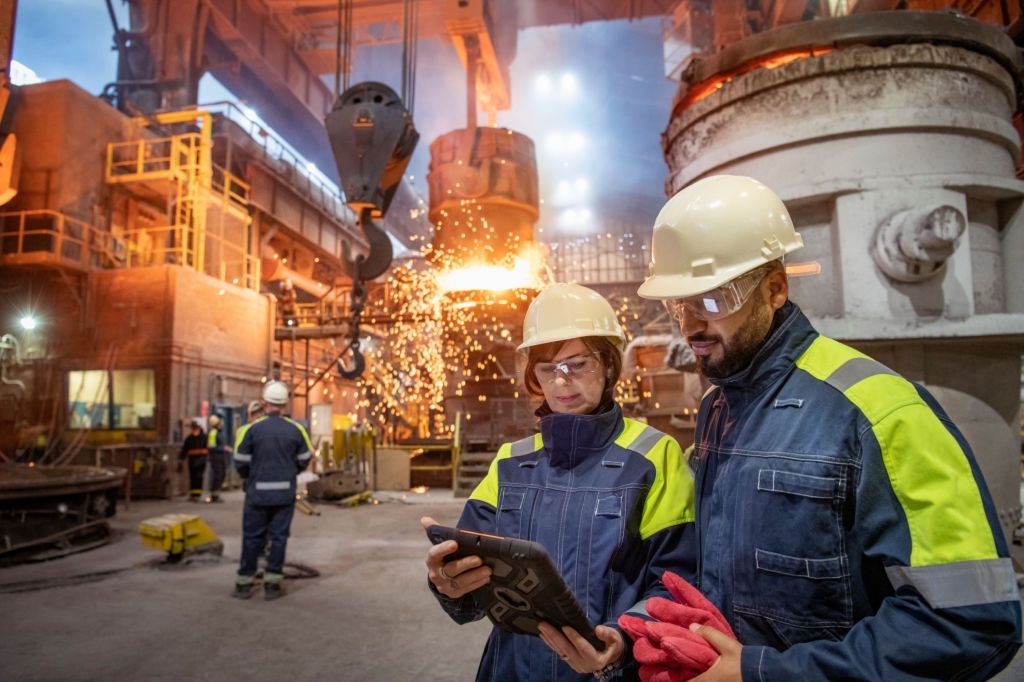
With the advent of industrialisation toward the start of the 20th century, nations with sound steel businesses profited from the beginning. India gained freedom in 1947 and aspired to become self-dependent under its newly acquired model of a blended economy. To accomplish this objective, the primary, secondary and tertiary sector demanded growth at the same time. As an unrefined substance and moderate item, steel was the normal connection between each of the three sectors as per Neeraj Kochhar Viraj Group.
Steel is the heart of the primary sector but also the backbone of the secondary, i.e. manufacturing sector. Enormous strength, low weight, long-lasting nature and malleability available at a minimal price make steel the most significant raw material for the manufacturing sector.

Usage of steel in India dates back to ancient times, but creation of steel that is being utilized present day started in late-nineteenth century. In 1875, the Bengal Iron and Steel Company utilized current techniques in the assembling of pig iron making it the first one in India.
This was considered as the ‘much-awaited push’ for the Indian steel industry. The Tata Iron and Steel Company (TISCO) established in Bihar in 1907 turned out as the foundation of the Indian steel industry. The big brother, Steel Authority of India Ltd. (SAIL) established in 1973 additionally reinforced the steel industry post-independence.
The Durgapur, Rourkela and Bhilai steel plants were established in collaboration with Britain, Germany and Russia respectively as the Indian steel industry had close connection with foreign countries. Not to forget, Indian companies have signed various Memorandum of Understanding with other countries in past years, especially in the innovation and tech space, to form joint ventures in steel production and supply.
What lies ahead?
In the 21st Century, a company, irrespective of the size or nature of business cannot sustain for long if it does not utilizes or adapts itself as per the new technologies also called Industry 4.0.
According to Neeraj Raja Kochhar latest news, Industry 3.0, which was primarily restricted to the automation of single machines and processes, Industry 4.0 or the emerging technologies shall include end-to-end digitisation and data integration of the value chain: offering digital products and services, operating connected physical and virtual assets, transforming and integrating all operations and internal activities, building partnerships, and optimising customer-facing activities.
Gaining expertise in Industry 4.0 requires a deep understanding of synergizing different products together, creativity, a mindset of solving problems and lastly the commitment of top management and a clear vision. Companies that fail to embrace this radical change will likely struggle to survive in the coming years. Yet, only a few companies can claim benefit from Industry 4.0 at this moment.
Industry 4.0 makes it easy to collect and analyse data and information across various machines, allowing faster, more flexible, compliant and more efficient business processes to produce superior quality goods at much lower costs.
This in turn will boost up productivity and promote economies of scale, encouraging industrial growth and transforming the workforce in the manufacturing industry – ultimately increasing the competitiveness of companies across regions. Some of the Industry 4.0 dominating technologies that are relevant to the manufacturing and steel industry are discussed below.
Drones
Remember the workforce required to inspect the proper working of the industry? Well, it is no more needed.
Commercial drones are the answer to your surveillance problems. These are extremely useful to inspect materials and devices without disturbing production. Such inspections are likely to reduce the time taken to detect a specific issue in completely inaccessible environments like finishing mills and furnaces. Drones can also be employed to collect better quality data due to their ability to take images at close range and from different angles.
Artificial Intelligence: the king of all
Neeraj Raja Kochhar latest news suggests that steel companies need a better way to manage raw materials. By keeping a track record of the supplier’s route details as well as traffic and weather conditions information provided by trusted external sources helps to identify the probability of delivery of raw materials getting delayed.
Big data as well as Internet of Things (IoT) uses predictive analytics based on patterns and hints available which can be used to calculate shortage of raw materials and possible delays in delivery. Well, if the company already knows that the goods will get delayed, the company can work out on a supply-related emergency plan or back-up plan that allows it to avoid breakage in production cycle and excessive downtime costs.
Machine learning experts can monitor the health of assets using analytical techniques such as logistic regression and neural networks. These techniques help in keeping track of variables such as working condition of the asset, its life, frequency, weather and failure to do task. Equipment breakdown is commonly seen in the operations of the metal and steel industry. But, if the companies predict them using tools, it can help organisations then optimise overall maintenance rate of the industry.
Robots: the new age workforce
Use of robots in the steel industry is not a new trend. Nowadays, robots come with artificial intelligence embedded with machine learning that increases competency of the industry
Equipped with algorithms, these robots can inspect items in bulk for scanning of errors, facilitate the transportation of work-in-progress or finished goods, and most importantly avoid safety risks using predictive intelligence according to Neeraj Kochhar breaking news.
With regard to Industry 4.0, there has been spike in demands of material composition of steel in terms of accuracy. Bringing fully-functioning multipurpose robots into the picture will allow prediction of risk and maintain consistency of manufacturing.
Employing robots will lead to reduced labour costs and increase in productivity as the robots can work continuously around the clock without fatigue. The industry can further cut down costs of insurance by not risking lives of human by employing them in highly hazardous environments. In addition to it, drones can be of help in different warehouse operations such as transporting materials from storage to production line and efficiently scanning stock – thus reducing overall labour costs incurred by industry.
Neeraj Kochhar Viraj Group has always been ahead of time and wishes the same for its potential business leaders around the world.







